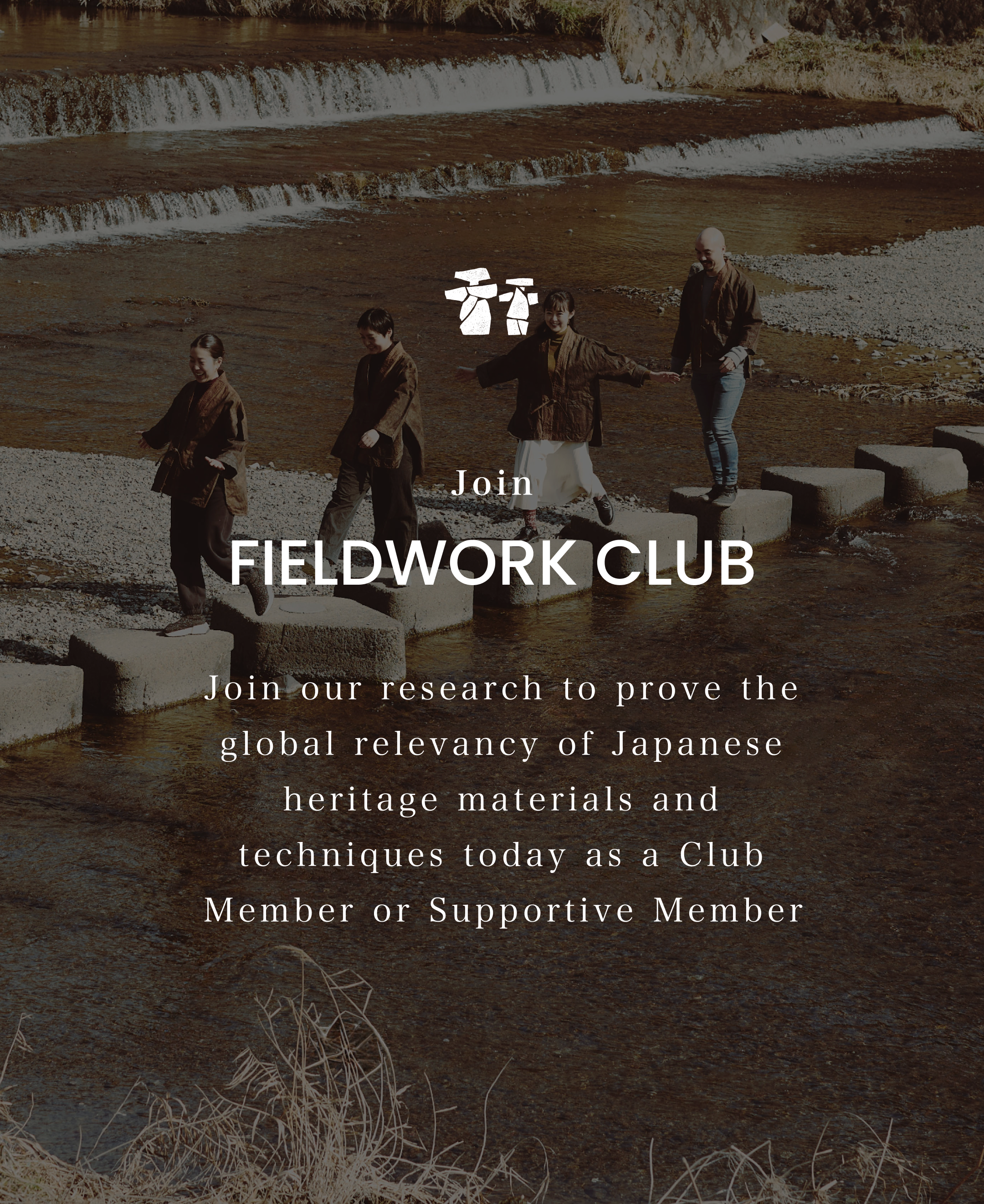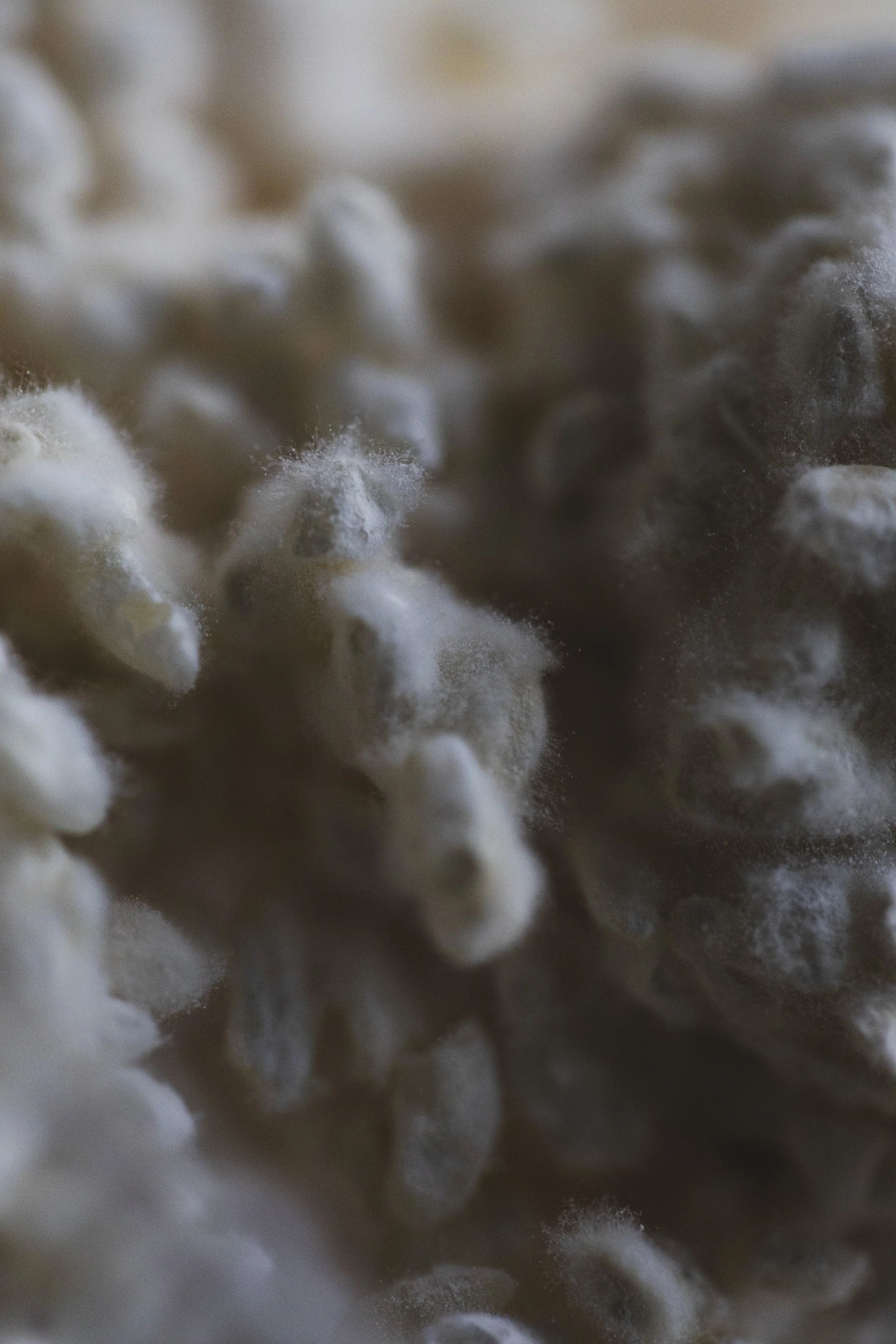OVERVIEW
Join Kyoto Research Institute’s ongoing study group. Explore the Japanese art of living, and the heritage materials and techniques that inspire sustainable, functional, and aesthetic solutions worldwide, through self-paced videos, workbook guides, live online sessions, and bi-annual in-person gatherings with Japanese craft professionals.
MEMBERSHIP PLANS
Join anytime!
MONTHLY
SUPPORTIVE MEMBER
5,000 jpy / month
I would like to join Fieldwork Club and am keenly interested in the work of Kyoto Research Institute, but would like to participate more passively while simultaneously showcasing my ongoing support.
RESEARCH
EXPLORE
EXPERIMENT
DESIGN
GATHER
✓ Secure bi-annual research and design reports
✓ First access to purchase final products that have been researched and designed by Fieldwork Club members
✓ Invitation to join bi-annual in-person Fieldwork Days in Kyoto
✓ Recognition with supporter credit on final products
25,000 jpy / term*
I would like to join Fieldwork Club and am keenly interested in the work of Kyoto Research Institute, but would like to participate more passively while simultaneously showcasing my ongoing support.
RESEARCH
EXPLORE
EXPERIMENT
DESIGN
GATHER
Bi-ANNUAL
SUPPORTIVE MEMBER
✓ Secure bi-annual research and design reports
✓ First access to purchase final products that have been researched and designed by Fieldwork Club members
✓ Invitation to join bi-annual in-person Fieldwork Days in Kyoto
✓ Recognition with supporter credit on final products
BI-ANNUAL
CLUB MEMBER
70,000 jpy / term*
I would like to join Fieldwork Club to cultivate a rich understanding of heritage Japanese materials and techniques that can be leveraged in my personal and professional life, participate in developing their practical use cases today, and nurture meaningful relationships with likeminded members and experts in Japan and beyond.
RESEARCH
EXPLORE
EXPERIMENT
DESIGN
GATHER
✓ Secure bi-annual research and design reports
✓ First access to purchase final products that have been researched and designed by Fieldwork Club members
✓ Invitation to join bi-annual in-person Fieldwork Days in Kyoto
✓ Recognition with research and design credit on all final products
✓ Weekly video lessons
✓ Live online sessions every other month
✓ Workbook guides and brainstorming prompts
✓ Access to full archive of Fieldwork Club Case Studies
WHAT IS
FIELDWORK CLUB?
We are opening up the doors to our research and design methodology, so that you too can participate in the discovery, unlocking, contribution, and application of heritage materials in our lives today.
Fieldwork Club is an immersive (mostly online) initiative exploring Japanese heritage materials and techniques. Together, let’s research, experiment, and co-design sustainable, functional, and aesthetic products rooted in traditional knowledge.
WHAT ARE HERITAGE MATERIALS?
At Kyoto Research Institute, we define heritage materials as raw natural resources like rice, seaweed, hemp, tea, and bamboo, that through the hands of traditional technique, to transform into the materials that create our everyday living. Examples of heritage materials include washi paper, koji-fermented grains, and earthen walls.
In Japan, we call “to live” or “to create living”, 衣食住 i-shoku-jyu. Quite literally clothing-food-home. These are the three fundamental sectors that constitute the Japanese art of living. Our approach to fieldwork of heritage materials, is tuning in to the archipelago’s raw natural resources and how they have historically been used across each of these sectors.
However, we don’t stop at research.
Our mission is to then go on to explore, experiment, and ultimately execute how these heritage materials have functional, sustainable, and aesthetic value in our lives today.
HOW DOES MEMBERSHIP WORK?
RESEARCH: Access Case Study results, following raw natural resources as they transform into practical use cases today.
EXPLORE: Study learning resources which include,
self-paced video lessons posted weekly with farmers, researchers, craftspeople, and other professionals key to this Case Study
workbook guides and brainstorming prompts toward monthly assignments
live online sessions with Kyoto Research Institute every other month
EXPERIMENT: Share personal insights and nurture creative conceptualization based on ancestral knowledge shared by generational industry professionals.
DESIGN: Co-design a physical product that can be used, worn, savored in-real-life that leverages heritage materials and traditional knowledge, respects culture and environment, and reflects contemporary needs and aesthetics.
GATHER: Visit us in Kyoto to join bi-annual in-person Fieldwork Days to meet one another, and to explore and reflect together.
WHAT ARE THE CASE STUDIES?
Case Studies are on a six month cycle, exploring two subjects per year.
Case Studies cover a wide range of subjets within 衣食住 i-shoku-jyu. From textile crafts, restoration techniques, architectural and garden design, and food and drink. We hope you will enjoy exploring the breadth and depth of Japan through these Case Studies.
The inaugural Case Study #001 starting 2025 October 1 is “Traditional Japanese Workwear for Today”. The curriculum is detailed below.
Who Can Join?
Fieldwork Club is communicated in English and Japanese. As such our videos and workbooks are bilingual. We welcome participants from all over the world with diverse backgrounds with a keen interest in the Japanese art of living. Including designers, researchers, makers, educators, and the perennial student. The only requirement is sincere enthusiasm toward the exploration of how Japanese heritage materials and techniques can inspire sustainable, functional, and aesthetic solutions worldwide.
Why Join?
DISCOVER ancestral knowledge of heritage Japanese materials and techniques
UNLOCK the very rare opportunity to learn directly from farmers, restorers, researchers, craftspeople, and other professionals who are modern custodians of generational wisdoms
CONTRIBUTE to the research and design of a new product that can be used, worn, savored in-real-life today
APPLY learnings to professional practices and more sustainable living solutions wherever you call home
Prospective Members are free to join at any time.
Join
Select one of the three Membership Plans detailed above.
Confirm
Once we have confirmed payment, you will be sent a form to formally register to Fieldwork Club. Please note that the confirmation process may take up to 24 hours.
Register
If you have completed formal registration as a Club Member, you will receive a follow-up email with access to Fieldwork Club Member’s Only Site. It includes access to Case Studies (weekly videos lessons, workbook guides, brainstorming prompts, and live online sessions), an invitation to join the next Live Online Session as well as the next in-person Fieldwork Day in Kyoto.
If you have completed formal registration as a Supportive Member, you will receive an invitation to join the next in-person Fieldwork Day in Kyoto.
REGISTRATION FLOW
QUESTIONS?
*One term is six months.
Membership subscriptions can be cancelled at anytime, Please note that we are unable to process refunds.
Membership subscription types can be changed at anytime. However, pricing and structure may evolve from what is currently displayed above.
CASE STUDY #001
Traditional Japanese Workwear for Today
2025 October 1 - 2026 March 31
SUBJECT
Sustainable Fashion: Traditional Japanese Workwear for Today
The inaugural Case Study subject explores traditional Japanese workwear: its fabrics, forms, and functions as understood through the lens of artisans, farmers, and textile makers.
GOAL
Members will participate in the co-designing of original workwear, designed in collaboration with traditional artisans, farmers, textile makers, and Kyoto Research Institute researchers. Something that you will be able to purchase and wear in-real-life.
SYLLABUS
-
LIVE SESSION
The historical and cultural context of Japanese workwear -
SELF-PACED VIDEO
The traditional Japanese raw materials that make up our textiles -
SELF-PACED VIDEO
Japanese aesthetic sensibilities, environmental precautions, and restoration techniques for functional wear -
SELF-PACED VIDEO
The historical, environmental, and cultural context of Japanese cotton -
SELF-PACED VIDEO
From raw natural resource to thread to fabric -
SELF-PACED VIDEO
Japanese traditional wears and its historical and cultural connotations vol. 1 -
SELF-PACED VIDEO
Interview of traditional Japanese craft professional vol. 1 -
SELF-PACED VIDEO
Interview of traditional Japanese craft professional vol. 2 -
SELF-PACED VIDEO
Interview of traditional Japanese craft professional vol. 3 -
SELF-PACED VIDEO
Interview of traditional Japanese craft professional vol. 4 -
SELF-PACED VIDEO
Interview of traditional Japanese craft professional vol. 5 -
SELF-PACED VIDEO
Design strategy based on interviews with professionals in traditional occupations -
SELF-PACED VIDEO
Japanese traditional wears and its historical and cultural connotations vol. 2 -
WINTER BREAK
New Years Holiday
(no new video) -
SELF-PACED VIDEO
Interview of traditional Japanese craft professional vol. 6 -
SELF-PACED VIDEO
Interview of traditional Japanese craft professional vol. 7 -
SELF-PACED VIDEO
Interview of traditional Japanese craft professional vol. 8 -
SELF-PACED VIDEO
Interview of traditional Japanese craft professional vol. 9 -
SELF-PACED VIDEO
Interview of traditional Japanese craft professional vol. 10 -
SELF-PACED VIDEO
Japanese traditional wears and its historical and cultural connotations vol. 3 -
SELF-PACED VIDEO
Design approach given everything studied in the field -
SELF-PACED VIDEO
Japanese traditional wears and its historical and cultural connotations vol. 4 -
SELF-PACED VIDEO
From seed, plant, fiber, thread, fabric, clothes, earth, and back to seed, the cycle of our sustainable wears -
SELF-PACED VIDEO
Japanese traditional wears and its historical and cultural connotations vol. 5 -
LIVE SESSION
Final Japanese workwear design as researched and designed together, reviewing restoration and dyeing techniques
PRE-SALE
First access to order the workwear that members have personally contributed to create -
FINAL WEEK
In person Fieldwork Day on 2026 March 25 for those who can gather in-real-life in Kyoto
(no new video)
Please note that schedule is subject to change.















